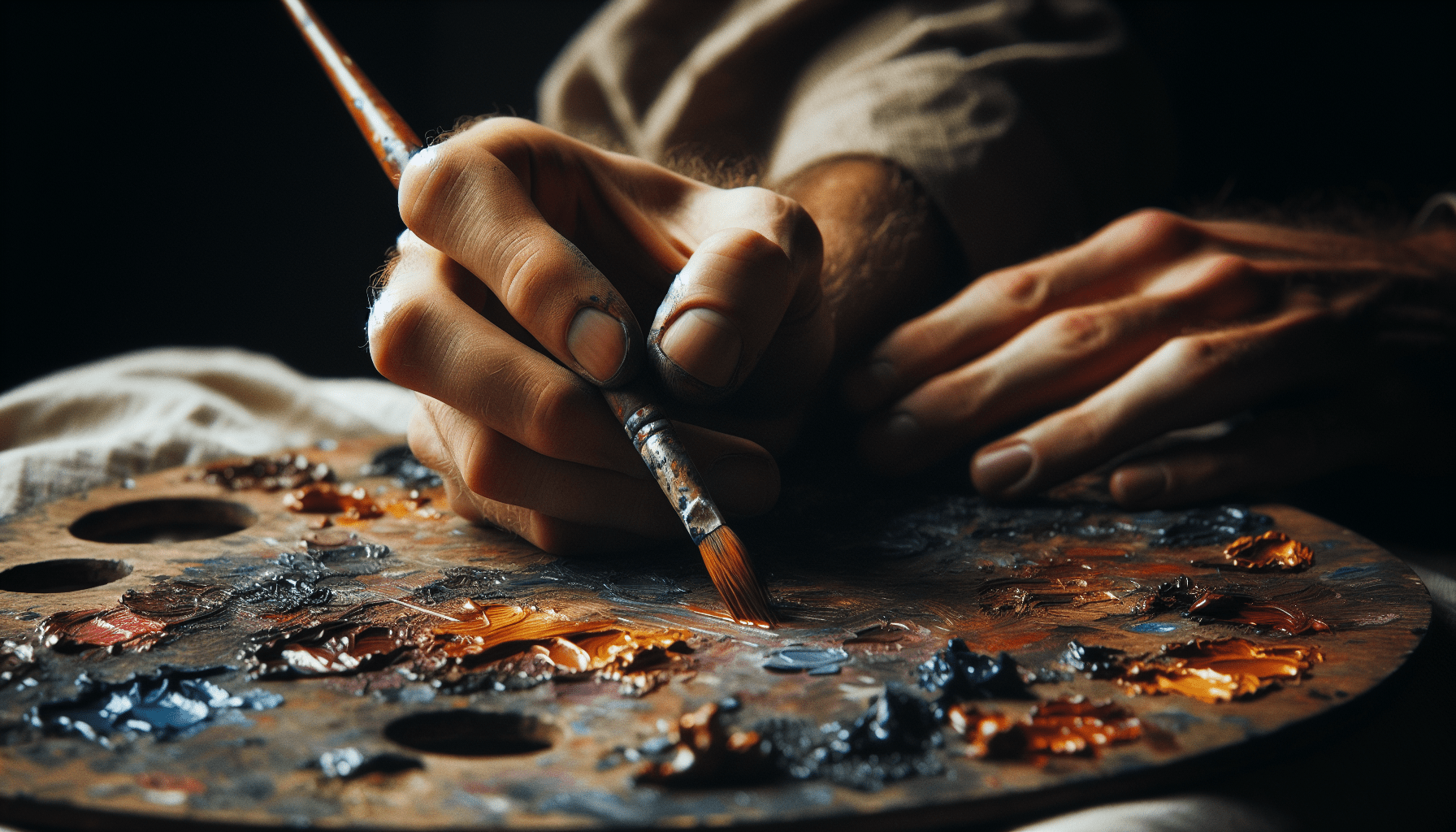In the article titled “What Happens If You Varnish An Oil Painting Too Early,” you will explore the critical timing and consequences associated with varnishing oil paintings prematurely. This concise yet informative guide delves into the adverse effects, including potential damage to the artwork, the altering of colors, and the disruption of the painting’s chemical processes. By understanding the importance of proper drying times and the dangers of hasty varnishing, you will be better equipped to preserve the integrity and longevity of your oil paintings. Have you ever wondered what could happen if you varnish an oil painting too early? Understanding the repercussions of such an action is crucial for artists and art conservators alike. Varnishing an oil painting too early can lead to a myriad of issues that could compromise the integrity and longevity of your artwork.

Understanding Oil Paint Drying and Curing Process
Oil paint goes through two significant stages: drying and curing. The drying stage is when the solvents in the paint evaporate, and the paint begins to set. The curing stage is when the paint fully hardens and achieves its maximum durability.
Drying Stage
The drying process in oil painting typically depends on the type of oil used, the thickness of the paint layers, and environmental conditions such as temperature and humidity. Generally, oil paint feels dry to the touch within a few days to a week. However, being dry to the touch does not mean the paint has cured.
Curing Stage
Curing is a more complex chemical process known as oxidation. During this stage, the oil reacts with the oxygen in the air to form a durable film. This process can take months and sometimes even years to fully complete. It is essential to wait until the curing process is well underway before applying varnish.
Consequences of Varnishing Too Early
Varnishing too early can lead to several detrimental effects on your oil painting. Here are some of the most common issues you might encounter:
Moisture Trapping
If you varnish before the oil paint has fully cured, you trap moisture beneath the varnish layer. This moisture can cause the paint to swell or blister, leading to unsightly and potentially irreversible damage.
| Issue | Description |
|---|---|
| Moisture Trapping | Trapped moisture can cause swelling or blistering of the paint. |
Discoloration
Varnishing oil paint that has not fully dried can lead to discoloration. The varnish can mix with uncured paint causing color shifts and an uneven finish.
Cracking and Crazing
The varnish layer is less flexible than the underlying oil paint. If the paint continues to cure beneath the varnish, it can cause the varnish layer to crack or craze, compromising the appearance and structural integrity of the artwork.
Loss of Gloss and Clarity
Applying varnish too early can result in a dull and cloudy finish rather than the clear and glossy protective layer that varnish usually provides.
Delamination
One of the most severe consequences is delamination, where the varnish separates from the underlying paint layer. This separation often results in flaking and loss of the paint film.
Optimal Time to Varnish
To avoid the grave consequences of varnishing too early, it is essential to understand the optimal timing for varnishing. Here are some general guidelines:
Rule of Thumb
Most experts recommend waiting at least six months to a year before varnishing an oil painting. This time frame allows the curing process to be sufficiently advanced, minimizing the risks associated with premature varnishing.
Testing for Readiness
One effective way to test if your painting is ready for varnishing is to use the “fingernail test.” Press your fingernail gently into an inconspicuous area of the painting. If the paint does not dent, it is likely cured enough to varnish.
Types of Varnishes
Different types of varnishes are used in the art world, each having its own set of characteristics and benefits. Understanding which varnish to use and how to apply it properly is critical for effective artwork preservation.
Traditional Resin Varnishes
Resin varnishes, such as dammar and mastic, have been used for centuries. They provide a natural, glossy finish but can yellow over time. They are best used on fully cured oil paintings to avoid any negative interactions.
Synthetic Varnishes
Synthetic varnishes, such as those made from acrylic, are favored for their non-yellowing properties and ease of removal. These varnishes tend to be more flexible, making them an excellent choice for oil paintings that may continue to cure over an extended period.
Applying Varnish Correctly
When you are confident that your painting is fully cured, follow these steps to apply the varnish correctly:
- Clean Surface: Ensure the painting is free of dust and debris.
- Test Area: Apply varnish to a small, inconspicuous area to ensure there are no adverse reactions.
- Apply Thin Layers: Use a soft brush or spray to apply thin, even layers of varnish.
- Allow Drying Time: Let each layer dry thoroughly before applying the next one.

Preventing Common Mistakes
Mistakes during the varnishing process can be detrimental, but they can be prevented with careful attention to detail and adherence to best practices.
Proper Environment
Ensure you varnish in a clean, dust-free environment with controlled temperature and humidity. This will help prevent contaminants from settling on the wet varnish.
Adequate Ventilation
Use varnish in a well-ventilated area to avoid inhaling fumes and to facilitate proper drying.
Avoid Rushing
Take your time with each step of the varnishing process, from preparation to application. Rushing can lead to uneven coverage and other issues.
The Role of Varnish in Artwork Preservation
Varnish serves several crucial roles in the preservation and presentation of an oil painting. Understanding these roles can help emphasize the importance of proper varnishing practices.
Protective Barrier
Varnish acts as a protective barrier, safeguarding the painting from dirt, dust, and environmental pollutants.
Enhancing Colors
A good varnish can enhance the colors of a painting, making them appear more vibrant and ensuring that the artwork continues to look its best over time.
Reversibility
A key feature of quality varnish is that it can be removed without damaging the underlying paint layer. This reversibility allows for conservation efforts should the varnish become discolored or damaged.
Frequently Asked Questions
What Kind of Brush Should I Use?
Use a soft, wide brush specifically designed for varnishing. This helps to ensure even coverage and reduces the risk of brush marks.
How Many Layers of Varnish Should I Apply?
Typically, two to three thin layers of varnish are sufficient. Multiple thin layers provide better protection and finish than a single thick layer.
Can I Use Spray Varnish?
Yes, spray varnish is a viable option, especially for artists looking to avoid brush strokes. Ensure you use it in a well-ventilated area and follow the manufacturer’s instructions.
Conclusion
Varnishing is a critical final step in the oil painting process. Varnish not only protects your artwork but also enhances its aesthetic appeal. However, varnishing an oil painting too early can lead to a host of problems, including moisture trapping, discoloration, and even structural damage. By understanding the optimal timing and correct application methods, you ensure the longevity and beauty of your oil paintings.
Take the necessary precautions, perform readiness tests, and choose the appropriate type of varnish to maintain the integrity and artistic value of your work. Your patience and attention to detail will be rewarded with a stunning piece of art that stands the test of time.



